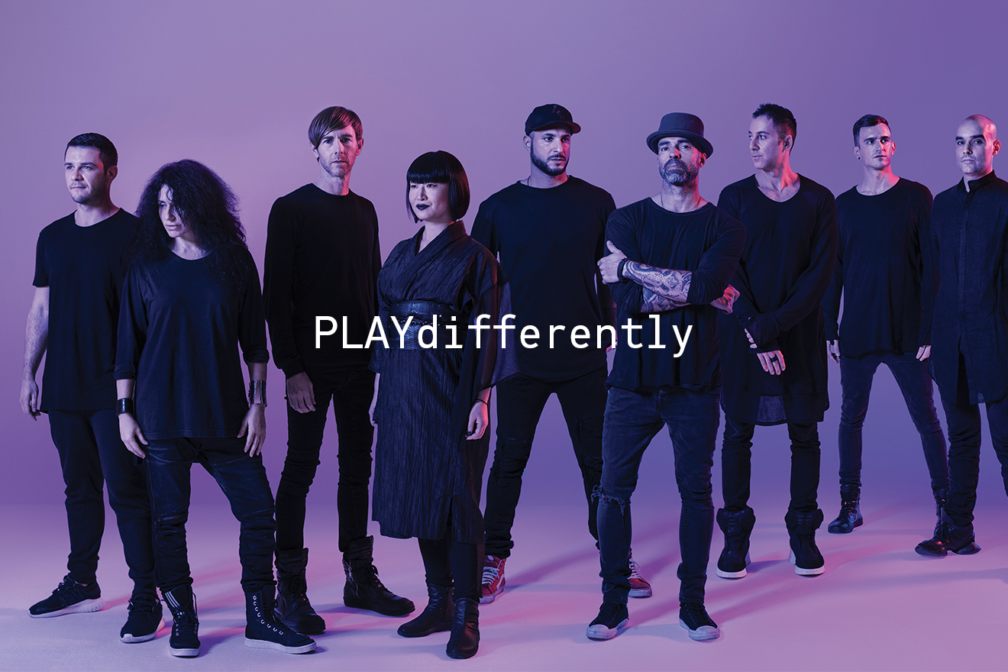 Features
Features
Playing differently: Richie Hawtin and his DJ super-team
We rounded them up at the Amsterdam Dance Event to talk tech, techno and taking performance to the next level
With each new development, the lines between playing and performing were blurring. His 2009 Livid Instruments controller CNTRL:R created even more dialogue between mixer and computer, allowing full control without having to look at a laptop. Meanwhile in 2010 his Griid application was one of the earliest to utilise iPads for performance.
“That was during the development of Plastikman Live,” he recalls. “I was controlling everything for that – audio, FX, lighting, everything. There was no way I could do all that on one controller so I wanted to incorporate the iPad.”
This thirst to control more and incorporate more and more technology reached a turning point during the development of his ENTER. concept. A live experience that featured an app (Smudge) which allowed you to interact with the event, it’s the one endeavour Hawtin would reconsider, in hindsight.
“The best nights and experiences are like hypnosis,” he explains. “The frequencies make you close your eyes and take you away, leading you into an alternate reality. We were giving people a reason to get their phones out and break away from that. I loved the interaction, but I question how it changed the focus of the experience.”
For Hawtin, the main mission now is to strip things back and create tools that enhance that alternate reality. To him, we’ve reached a point in tech where it’s not a case of working out what we need to find a solution, but deciding what we don’t need. Cue: MODEL 1. A mixer that, rather than featuring every possible bell or whistle, offers six channels to power whatever tools the DJ wants to use through some of Rigby-Jones’ most detailed, high-end audio spec to date, unique frequency-sculpting EQs and filters.
“I feel that with the glut of cookie-cutter mixers doing the same thing we are going down a precarious road, pushing a group of DJs and artists through a very similar pipeline,” he explains. “It’s great to have mixers with built-in effects, but the more flexible and modular our instruments are, the more opportunities we can create. I want artists using it to think about all the great nights they’ve had, all the things they’ve learnt about DJing and all their favourite records and ask, ‘How am I going to play these in a way that’s different to anybody else?’ It’s a mentality which, for me, is the base of the great DJ artisan.”
If the real art is in how we integrate with technology, the MODEL 1 is the biggest blank canvas Richie’s made so far. What’s interesting, he’s noticed, is how it’s influenced a change in style for him and his ambassadors. Rather than adding more tools, layers and complexities, it’s stripped back the technique. Liebing says he’s started to go a lot trippier with his blends, while Dubfire describes how it’s engaged him with the crowd again.
“It’s made some of us play slower and maybe only layer two things and just spend time using the mixer to manipulate,” says Richie. “That’s what I wanted to do: bring the focus back on the mixer as the main instrument. Right there in the middle. As it was for the pioneers who inspired me, as it will be for the pioneers who inspire the next generation as we move into the future. Which is, as I said earlier, where techno’s heart and soul lies.”
The future is where Richie’s heart and soul lies, too. As for the future of PLAYdifferently, he confirms that this is just the beginning. What seems important for him right now is not to add more noise to an already chaotic market but to only create something if there’s nothing else already filling that role. “Sometimes you want to create solutions. Other times you want to create possibilities,” he says. “But what we should never forget is the incredible synchronicity between DJ and crowd. Good DJs don’t just play the ten best songs you know them for, like a band at a gig. We’re watching and listening and moving with the crowd. We’re all on a trip together.”


